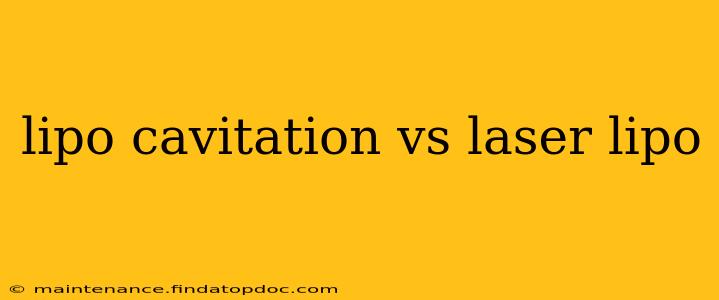Choosing between lipo cavitation and laser lipo can be confusing. Both are non-invasive fat reduction treatments promising body contouring without surgery, but they operate using different mechanisms. This comprehensive guide explores the key differences, benefits, and drawbacks of each procedure, helping you make an informed decision about which might be best suited for your needs.
What is Lipo Cavitation?
Lipo cavitation utilizes ultrasound technology to break down fat cells. A handheld device emits low-frequency ultrasound waves that create cavitation bubbles within fat cells. These bubbles implode, effectively destroying the fat cells. The released fat is then naturally processed and eliminated by the body's lymphatic system.
Benefits of Lipo Cavitation:
- Non-invasive: No incisions or anesthesia are required.
- Relatively painless: Most patients describe the sensation as a mild tingling or warmth.
- Minimal downtime: You can usually return to your normal activities immediately after treatment.
Drawbacks of Lipo Cavitation:
- Results may vary: The effectiveness depends on several factors, including the patient's individual metabolism, diet, and exercise habits.
- Multiple sessions may be needed: Achieving optimal results often requires multiple treatments.
- Not suitable for everyone: Individuals with certain medical conditions, such as pregnancy, heart problems, or certain types of implants, may not be suitable candidates.
What is Laser Lipo?
Laser lipo, also known as laser lipolysis, employs low-level laser energy to target and break down fat cells. The laser energy causes the fat cells to release their contents, which are then naturally metabolized and eliminated by the body. This process also stimulates collagen production, potentially leading to skin tightening.
Benefits of Laser Lipo:
- Non-invasive: Like cavitation, it doesn't involve incisions or surgery.
- Minimal discomfort: Most patients report minimal discomfort during the procedure.
- Potential for skin tightening: The laser energy can stimulate collagen production, leading to improved skin tone and firmness.
Drawbacks of Laser Lipo:
- Cost: Laser lipo can be more expensive than lipo cavitation.
- Multiple sessions often required: Similar to cavitation, achieving desired results usually necessitates multiple treatment sessions.
- Results vary: The degree of fat reduction depends on individual factors.
Lipo Cavitation vs. Laser Lipo: Key Differences Summarized
| Feature | Lipo Cavitation | Laser Lipo |
|---|---|---|
| Technology | Ultrasound waves | Low-level laser energy |
| Mechanism | Cavitation bubble implosion | Fat cell breakdown and collagen stimulation |
| Pain Level | Mild tingling or warmth | Minimal discomfort |
| Downtime | Minimal | Minimal |
| Cost | Generally less expensive | Generally more expensive |
| Skin Tightening | Limited | Potential for improved skin tightening |
How Many Treatments Are Needed?
Both lipo cavitation and laser lipo typically require multiple sessions to achieve noticeable results. The exact number of sessions depends on the individual's body type, the area being treated, and the desired outcome. Your practitioner will be able to provide a personalized treatment plan after a consultation.
What Are the Side Effects?
Side effects are generally mild and temporary for both procedures. Possible side effects include temporary redness, swelling, bruising, and tenderness at the treatment site. Severe side effects are rare.
Is There Any Downtime?
Both lipo cavitation and laser lipo involve minimal downtime. Most patients can resume their normal activities immediately after the procedure. However, it's advisable to avoid strenuous exercise for a short period following the treatment.
Which Treatment is Right for Me?
The best treatment for you depends on your individual circumstances, goals, and budget. A consultation with a qualified medical professional is crucial to determine the most suitable approach. They can assess your body composition, discuss your expectations, and recommend the treatment most likely to deliver the desired results. Consider factors like your budget, desired level of fat reduction, and skin condition when making your decision. Both options can be effective, but choosing the right one for your specific needs is paramount.
